A homemade apple cider press can transform the apple season for you. Don’t be deterred from making something like this–it is well worth the effort!
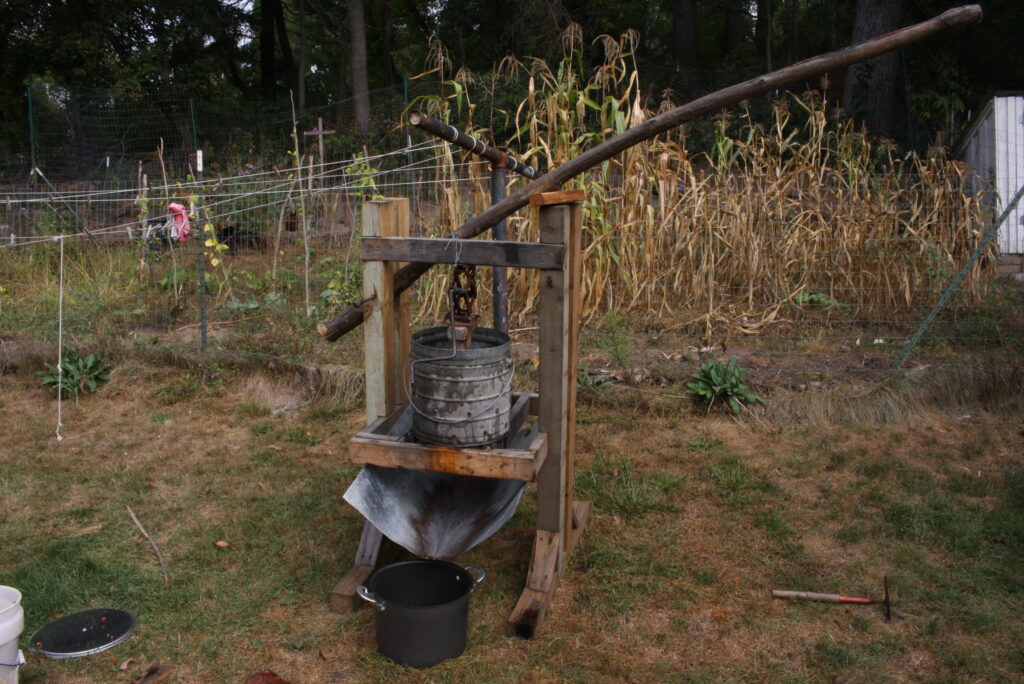
Apples are one of the first signs of the coming Autumn season. They bring a wealth of opportunities for the modern peasant. For more on that, read my previous article here. And one of the best ways to make use of this rich crop is making apple cider.
Reasons to Press Apples into Juice
- Pressing apples is the best way to use all those bruised and ugly apples that would otherwise go to waste.
- Fresh apple juice can be enjoyed fresh or easily canned and stored in the pantry.
- Apple cider vinegar: wonderful for cooking as well as for medicinal purposes for both man and beast. You could easily make your own to use year round!
- Hard cider(or Apfelmost in German): This is probably one of the easiest alcoholic beverages to make.
- Community building: It’s a great time of year to be outside. Invite people over on a weekend to have a cider-pressing day. Pool all your apples together and split the rewards.

The Elements Needed to Build a Homemade Apple Cider Press
To actually buy an apple cider press, you are going to look to spend anywhere between a few hundred to well over a thousand dollars. If that sort of money is not justifiable for you, there are other ways! You just have to get creative. A homemade apple cider press needs these basic elements:
- A means of crushing the apples into a pulp
- A sturdy, perforated cylinder that can take the force of the press
- a mechanical means of pressing: Either some form of screw or heavy lever.
- a sturdy frame that can take the force of the pressing.
- a fabric filter
- A large pan for underneath the cylinder. This catches the juice and funnels it into a pot or clean pail.
The Process
Crushing: Crush up the apples into a pulp. Many cider presses have a mechanical crusher. This usually involves heavy rollers with teeth. However, you can easily bypass this bit of machinery by crushing them manually in a sturdy tub with a long beam or 2×4.
Crush them to a fine pulp with no large chunks. If you are able, let them sit for at least a half hour. Letting the pulp sit for a while gives it time for the bruised fruit tissue to start releasing the juice on its own.
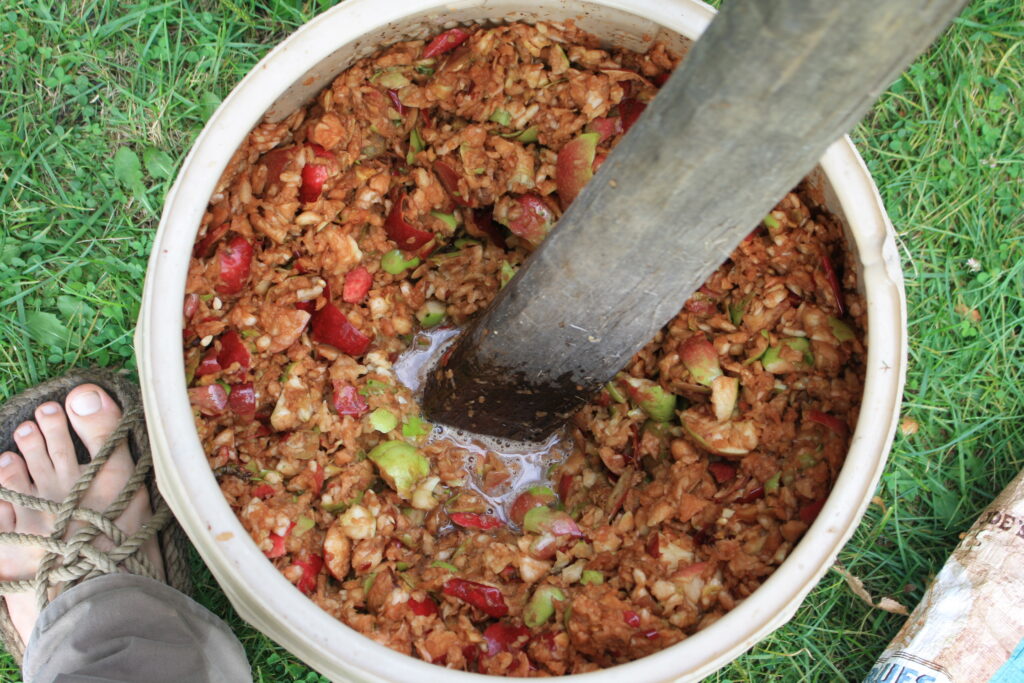
Pressing: Transfer the pulp into a fine netting and place in the perforated cylinder. I used a metal mop bucket with holes drilled in it.
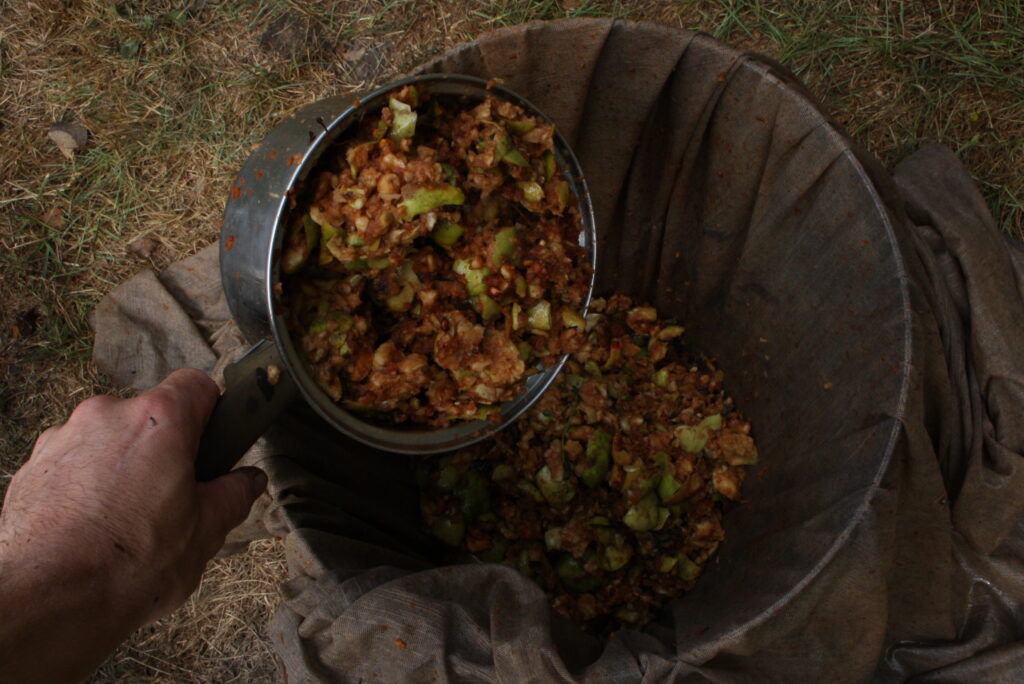
A round, heavy wooden cover that fits inside the cylinder is placed on top. This stout cover takes the force of the press.
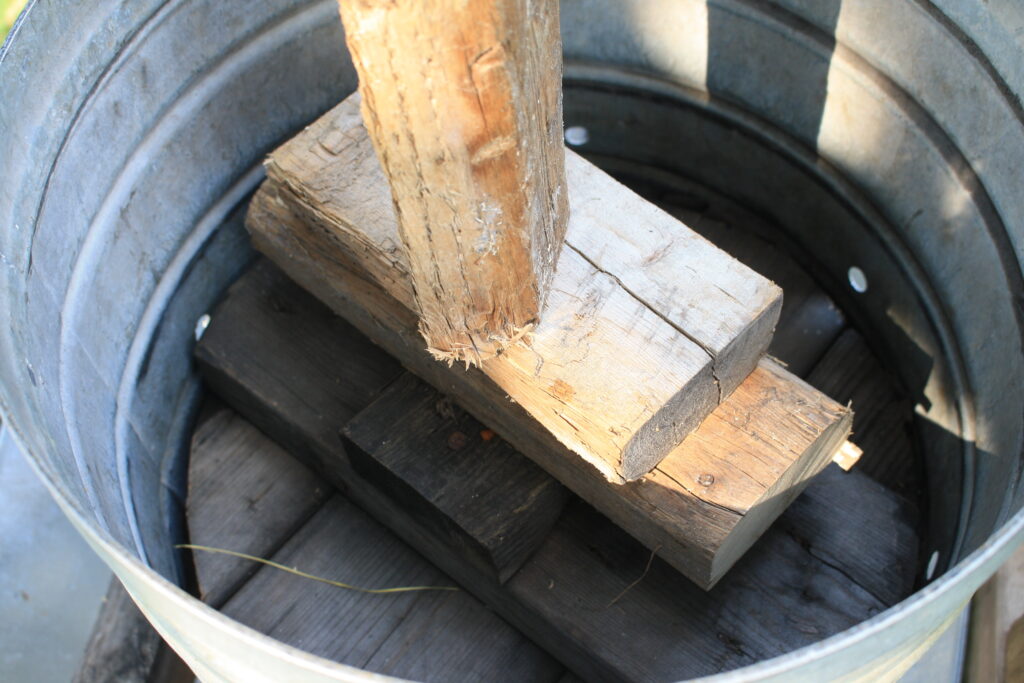
When I first built the press, I went full primitive. My means of pressing was a long wooden beam of stout ash wood. The children like this method. The picture below explains why.

Later, to get more pressing force, I rigged up an old car jack, braced against the cross-beam.
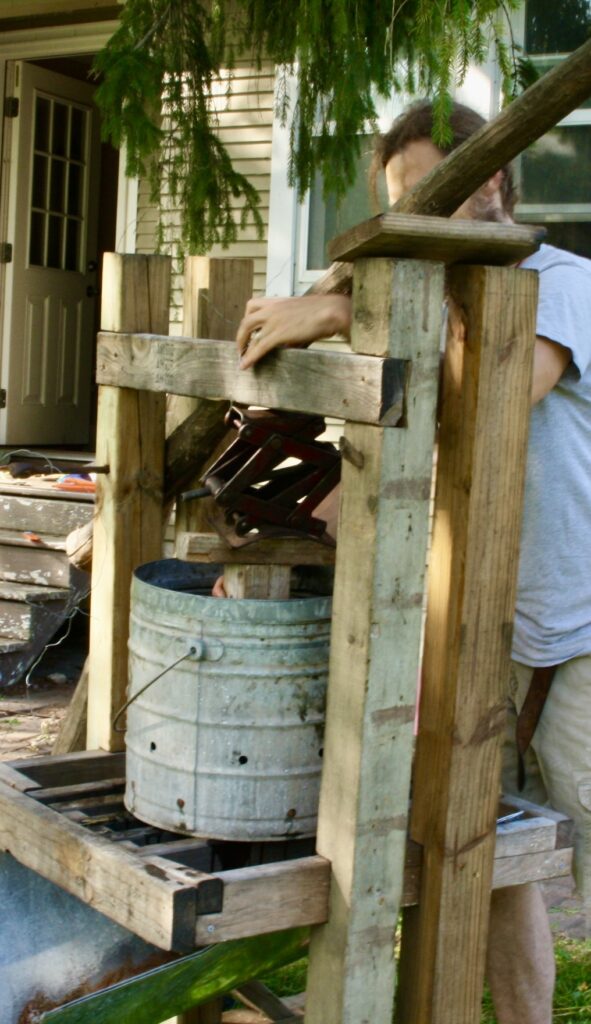
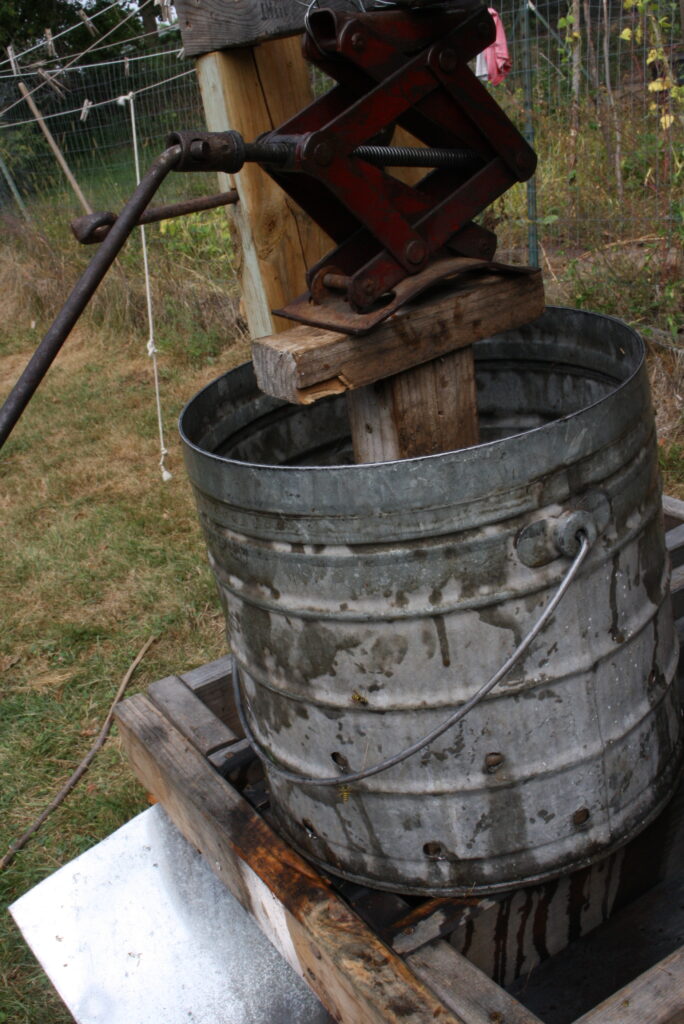
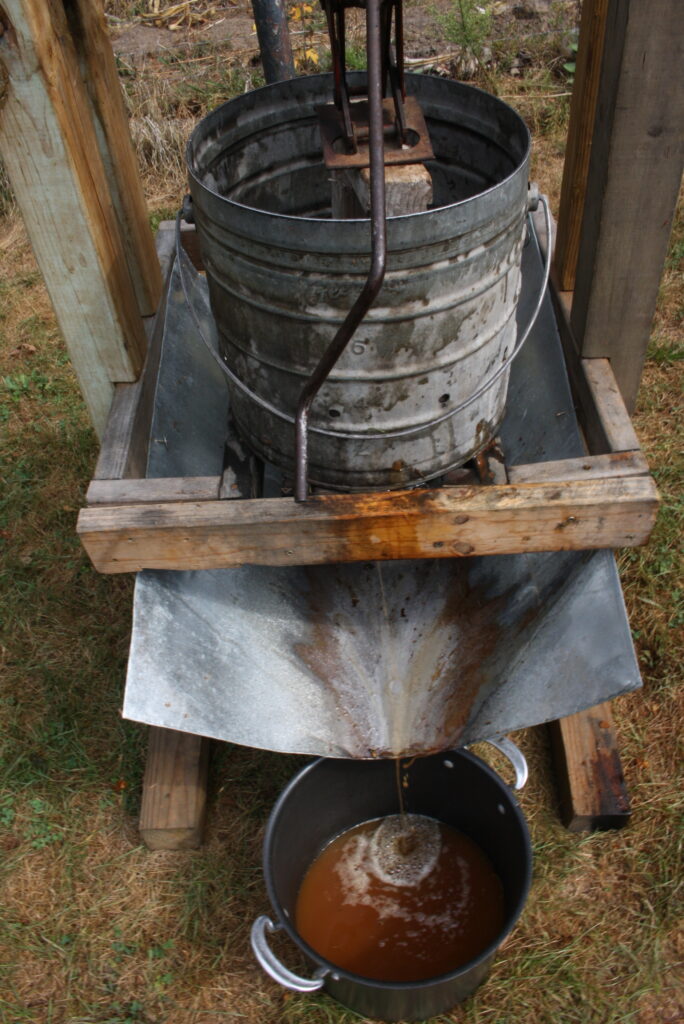
Drink it fresh for your supper or can or freeze it for later date. However, fermenting it into an easy alcoholic cider, in my opinion, is the best thing to do with it. Prost! ~ Nathanael
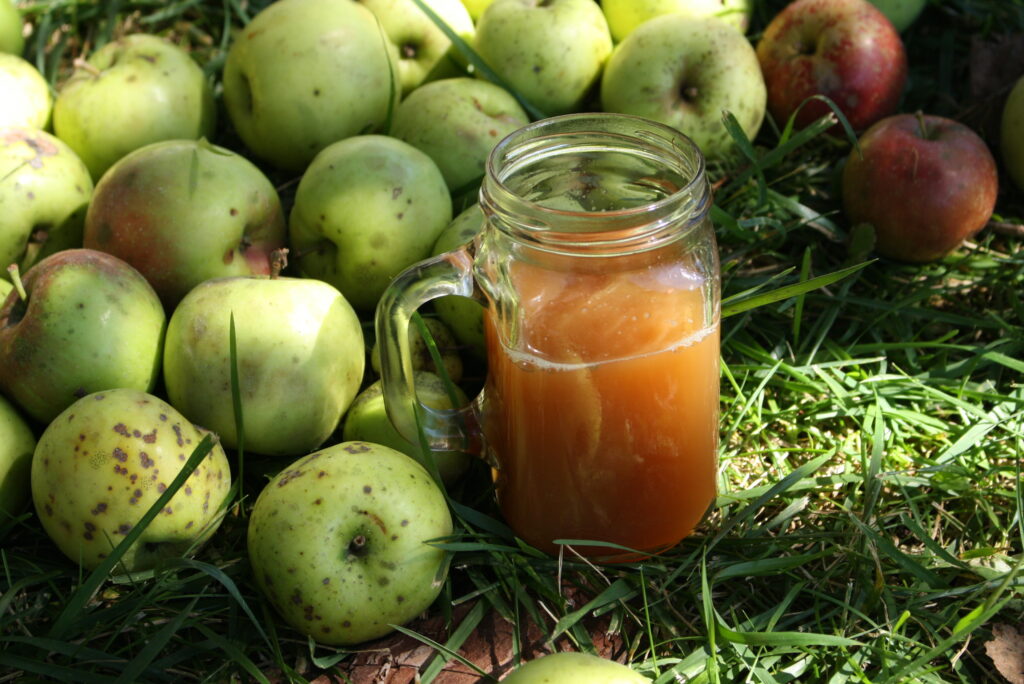


Leave a Reply